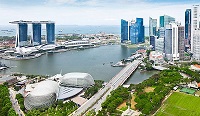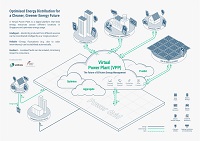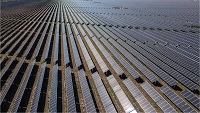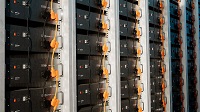For more information, please refer to:
Your Excellencies,
Distinguished guests,
Ladies and Gentlemen,
Introduction
A very good morning and I would like to extend a warm welcome to all speakers and participants at the Singapore International Energy Week (SIEW).
The Singapore Energy Summit (SES) is a key event in this year’s Energy Week. It brings together political leaders, policy makers and business leaders from across the Asia Pacific, and we are pleased to see the strong and growing response to this event.
The global energy landscape has witnessed a significant evolution in recent years. One key driver of this change is Asia’s strong economic growth, coupled with rapid urbanisation, which will continue to fuel the increasing demand for energy in the world. In that context, it is essential that we discuss and address the challenges and trade-offs that policy makers face in striving for a smart energy economy that reconciles the triple objectives of energy security, environmental sustainability and economic competitiveness.
Enablers for a Smart Energy Economy
Greater productivity brought about by innovation and sustainable energy use, are key attributes of a smart energy economy. In particular, efforts aimed at energy efficiency and clean energy are imperative as part of a broader strategy to enhance the competitiveness of businesses and economies over the next decade and beyond.
Strong political and business leadership is also needed to bring about a confluence of the key enablers for the transition to a smart energy economy. Let me touch briefly on some of these enablers which I understand will also be discussed in today’s sessions.
Innovation Beyond Technology
Technological advancements will power solutions for the new energy future. From traditional hydrocarbons and combustion-based technologies to new and renewable sources; from upstream R&D to downstream applications; and, from power generation and transmission to energy demand management – innovation is a crucial element.
The challenge for the energy sector is to be able to bring together the various facilitating elements – innovative policies, capability-building, financing solutions, as well as stakeholder engagement initiatives - to drive such advancements in technology.
A Total Solution for Energy Efficiency
This challenge is well-illustrated in the promotion of Energy Efficiency or ‘EE’. The International Energy Agency (IEA) has estimated that current energy use in the OECD countries would be 63 per cent higher if not for EE improvements that have been achieved over the past 35 years.
In a carbon-constrained world, there is even greater urgency to increase the adoption of EE measures and the contribution from “negawatts[1]”. However, despite the evident dual benefits of cost and carbon reductions, impediments remain. For example, there is a discernible gap between the technologies that are readily available today and their deployment in practice. This is partly attributable to the uncertainty over policy regimes and the benefits EE can bring.
For industries and businesses, other key barriers to the early adoption of energy efficient measures include high upfront capital costs and capital constraints, especially in the face of other investment opportunities and priorities. Ensuring adequate financing and the careful design of financing incentives will be important in addressing these market failures and barriers. Other policies and tools that will have to be implemented in a concerted action towards energy efficiency include capability building in energy management, energy reporting and audits, educational campaigns, and the establishment of standards. In short, energy efficiency needs a coordinated and total policy response in order to yield tangible and durable benefits.
Green Financing
Financing is another catalytic factor in the development and deployment of technological solutions to meet energy challenges. Green financing has been growing rapidly around the world. There is a wide spectrum of green financial products available today, spanning retail finance, corporate and investment finance, asset management and insurance.
It is estimated that total private investment in the green economy, in the broadest sense, has amounted to more than US$1.6 trillion since 2007. This includes investments in renewable energy, efficiency and green construction, cleantech, and smart grids.
Clearly, a low-carbon future opens business opportunities for the growth of differentiated and viable financial instruments tailored to the needs of the clean energy and related sectors.
Conclusion
It is evident that the growth in the demand and market opportunities for new energy ideas in Asia calls for a response on several fronts. We need innovation – in technology, policy and financing. We also need a suite of practical solutions that is tailored to the characteristics and constraints of each region.
We are privileged to have with us at the Singapore Energy Summit many leaders from the public and private sectors who embody a wealth of experience and expertise in the energy sector. I therefore look forward to this summit sparking off insightful discussions on the modalities we can pursue as part of corporate and national strategies towards the goal of smart energy corporations and economies.
I wish you all a fruitful and productive summit.
Thank you.















